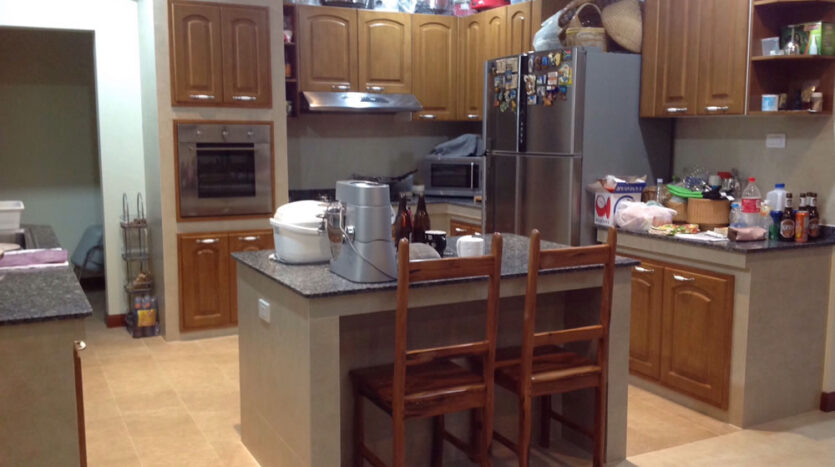Kitchen Designs and Appliances
When planning your kitchen, think about how you cook and entertain. Select your most frequently prepared recipes and see what will make creating the meals more efficient and more enjoyable experience for you. This process will assist you in enhancing your kitchen layout, selecting amenities that suit your cooking style and making the most of your kitchen budget. Consult with a kitchen designer to help you plan your dream kitchen or updating your current one. Here are some ideas to get you cooking.
• Focus on function: Place the three kitchen components- sink, refrigerator, and stove, in a triangle to facilitate cooking. It is best to put the sink between the refrigerator and the cooking surface.
• The kitchen sinks: Most of your kitchen chores involve a sink, so select a bowl and faucet that will be effective and durable. Select your sink material and style according to how you work in your kitchen. Stainless steel is the most popular sink material. It is the least expensive choice, durable and light weight, and easy to install. Consider the quality of the metal; the smaller gauge number indicates stronger metal. The cost increases with quality. A good choice is a 19-gauge nickel and stainless steel sink with a brushed finished. The stronger metal resists denting; the nickel content keeps off water spots; and the brushed finish hides scratches. For colorful sinks, enameled cast iron resists chipping and will keep its shine after years of use. One draw back: its weight can make installation more difficult. The solid-surface material which the sink and countertop are all in one piece makes for easy cleaning.
• The kitchen faucets: Special faucet features and accessories can make your work and clean up in the kitchen easier. Some faucets are made without washers to eliminate leaks; others replace the rubber gaskets with plastic or ceramic disks.
• The ranges and cooktops: A range that includes the cooktop and the oven in one unit is the most common cooking equipment; it is cheaper than buying a separate wall oven and cooktop. If you use your oven frequently, a range means a lot of bending and anyone cooking on the stovetop will be in the way. In this case a separate cooktop and a wall oven may be a good choice. If your kitchen space is small, a range can be a big space saver. Having just one piece of equipment will also save the need for running electric or gas lines to the separate units. A professional style range requires the width twice the 30-inch standard consumer model. You might have to give up some cabinet space. When deciding on size and types for your range or cooktop, keep safety in mind: A typical kitchen accident often occurs when someone losses control of a pot trying to remove it from the cooking surface, and the contents spill and scald the cook.
• The hoods and vents: A duct system must be ventilated to the outside. Surface cooking releases steam, heat, grease, and odors. Choose a system with a rating of at least 150 cubic feet per minute; check for a design that pulls rising cooking vapors and contains them until the blower can carry them outside. Check the system’s sone (sound) ratings; the lower the rating, the quieter the ventilator. The vent hood should be installed no higher than 30 inches above the cooking surface and it should cover all burners. Never use a ductless hood with a gas appliance.
• The refrigerator: Read the yellow energy guide label on models you are considering to have an idea of its future operating costs. As a rule when trying to figure out capacity needs, start with 12 cubic feet of total refrigerator/freezer space for the first two family members, and then add 2 cubic feet for each additional person in your household. An over-filled refrigerator/freezer will have poor air circulation and will cost more to operate. Consider quality construction, quiet operation, and automatic defrost.
• The ovens: Basic gas or electric ovens are 27 to 30 inches wide and typically offer conventional heat. Consider the foods you like to cook when choosing an oven’s size such as a rack of lamb or a huge turkey. Some manufactures make smaller ovens meant for flat items such as pies, casseroles, or pizza. Top-of-the-line ovens often include larger interior space, heavier racks, and precision temperature controls. Evaluate the merits of gas, electric, convection, and halogen oven according to your cooking style.
Before you shop for your kitchen appliances, evaluate and study what’s available these days to fit your situation now and any potential changes in your family size, lifestyle, and kitchen design. Study available features and prices then narrow your choices. This procedure can help you whip up your new kitchen solution.

